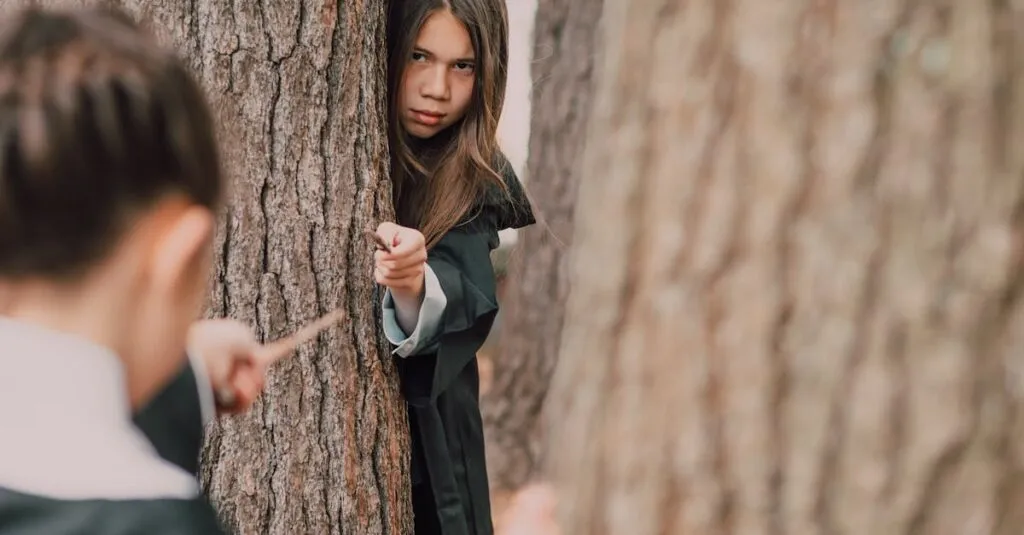Understanding the Basics of Action and Reaction
Helping preschoolers understand actions and reactions can feel like herding cats. But fear not! Children learn through experience, so showing them the cause-effect relationship is key.
Imagine a world where every time they knocked over a block tower, a giant cookie appeared! Though tempting, this doesn’t happen in real life. Start by using simple, relatable examples. When they spill milk, involve them in cleanup. Let’s make understanding everyday consequences a family event!
Remember, patience is crucial. You’ll find repetition tiresome, but kids thrive on it. Consistency builds a solid foundation.
Let your sense of humor shine through; jokes lighten the lesson load. For instance, ‘Oh no, milk down! Quick, the floor might get thirsty!’ Kids love a bit of silliness with their seriousness.

Why Consequences Can Be Fun!
Who said teaching consequences has to be all doom and gloom? Let’s make it fun! Think of scenarios that are child-friendly and playful. Imagine a ‘magic consequence box’ where each action, like helping tidy up, leads to a fun reveal of mini surprises.
Discuss with them what might happen next after a specific action. It’s like a mystery novel where they create the plot!
Engaging Activities to Teach Consequences
- Engage in role-playing games where they act out different scenarios.
- Dress as characters and see what happens when ‘Pirate Tom’ leaves the treasure map lying around.
- Would the next consequence lead him to a secret cave or an empty ditch?
These games not only teach consequences but ignite imagination too.

Daily Scenarios: Teaching Through Play
Children learn best through play. Use daily scenarios to explain why actions have outcomes. Bath time is perfect for this!
Help them understand:
- The water stays warm when they keep the plug in.
- It gets drained when it’s pulled out.
Address simple morning routines with logic and laughter. For example:
‘If we brush our teeth, they stay healthy and shiny for the Tooth Fairy’s inspection!’
These practical lessons, wrapped in fun, teach core concepts effortlessly. Remember, storytelling can dramatize lessons effectively. For instance:
‘Once upon a time, a little bunny bounced without thinking…’ turns the narrative into an engaging learning session.

Managing Emotions: The Toddler Way
Managing emotions is a herculean task for toddlers. It’s an everyday reflection of stormy skies and sudden rainbows. This emotional ebb and flow is normal.
Share stories about emotions with cheerful endings. Equip them with words for what they feel, like when they’re ‘fizzled’ or ‘sparkly’. Encourage them to recognize emotions in others.
Use expressive toys to illustrate different feelings. Humor is particularly helpful here. For example:
‘Feeling grumpy like a grumpy cat? How about we purr it away with a song or dance!’
This approach validates their experiences and gives safe outlets for big feelings.

How to Encourage Conversations at Home
Open conversations pave the way for understanding consequences at home. Here are some effective strategies to foster dialogue:
- Ask Open-Ended Questions: Encourage your child to share by asking questions about their day, such as ‘What was the best part of your day?’
- Ponder ‘What Would Happen If…?’ Scenarios: These types of questions prompt children to think critically about consequences. For example, ‘What would happen if we didn’t water the plants?’
- Engage in Shared Activities: Activities that explore outcomes can enhance their learning. Try asking, ‘If you build a block tower, what do you think needs to happen to make it taller?’
- Celebrate Their Observations: Acknowledge and guide their insights gently, reinforcing their understanding.
- Share Your Own Stories: Make yourself relatable by sharing personal anecdotes, like ‘I once forgot to water my flowers, and they drooped like sad spaghetti!’ This reassures them that everyone, even adults, learns from consequences.
Lastly, always leave room for them to ask questions. Keeping the dialog open and lively enhances their curiosity and involvement!

